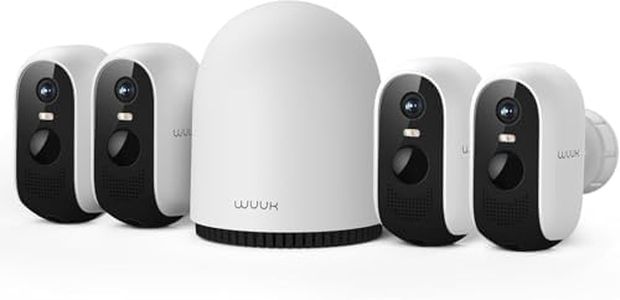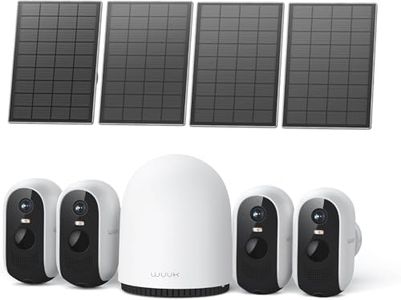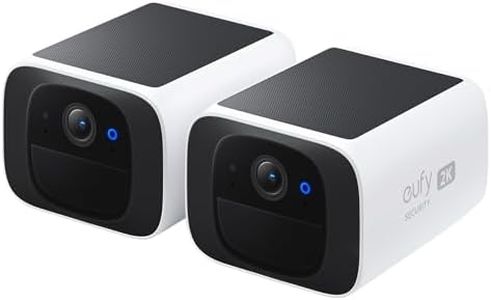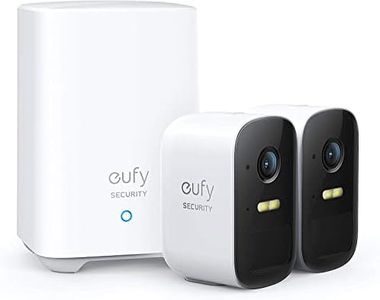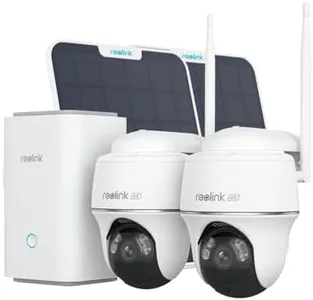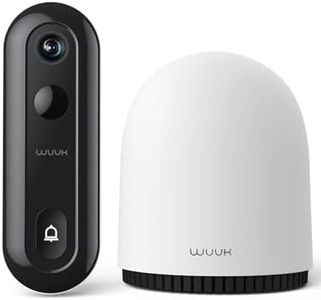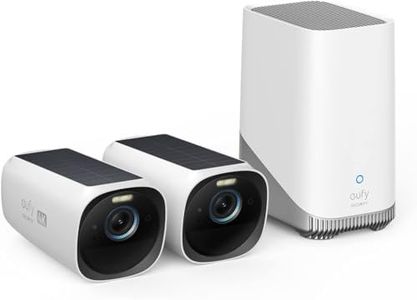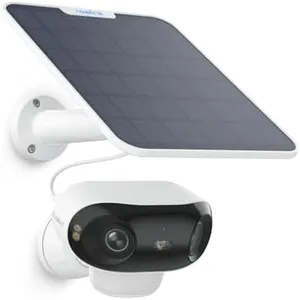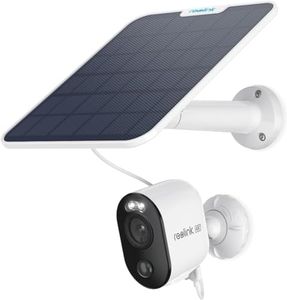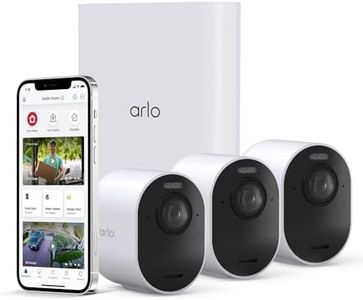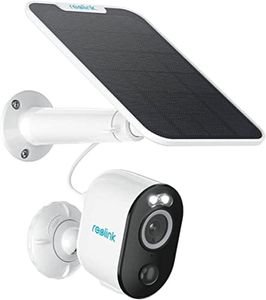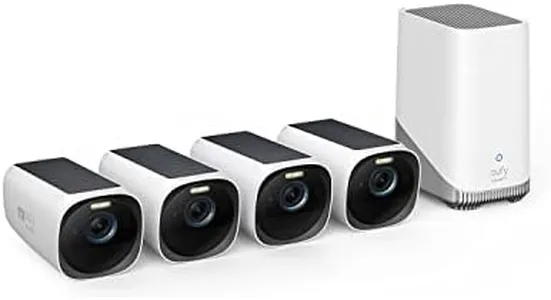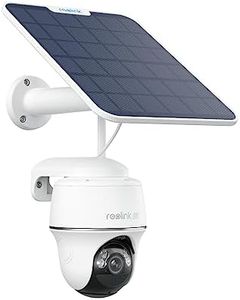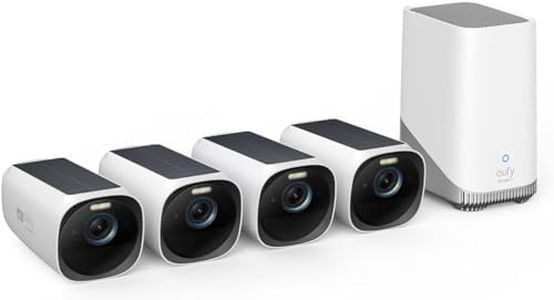We Use CookiesWe use cookies to enhance the security, performance,
functionality and for analytical and promotional activities. By continuing to browse this site you
are agreeing to our privacy policy
10 Best No Monthly Fee Home Security System
From leading brands and best sellers available on the web.Buying Guide for the Best No Monthly Fee Home Security System
Choosing a no-monthly-fee home security system means you want effective protection for your home without the burden of ongoing costs. These systems give you more control over your security features and how you monitor them. The goal is to find a system that fits your household’s size, your comfort with technology, and your security needs. It’s important to look at the practicality and reliability of each feature, ensuring that you’re adequately protected and can easily manage the system on your own.Connectivity (Wired vs Wireless)This refers to how the security system sensors and main control panel are linked. Wired systems use physical cables to connect devices, which can make them more reliable and less prone to interference, but they are harder to install and may not be suitable for renters or those who don’t want to drill holes. Wireless systems use Wi-Fi or radio signals, making installation easy and flexible. If you want a quick or temporary setup, wireless is usually best. If you prioritize consistent reliability and are willing to undertake a more involved setup, wired may be your preference.
Monitoring Method (Self-Monitored vs External Storage)No-monthly-fee systems are usually self-monitored, meaning alerts come directly to your smartphone or device, or they record to local storage such as SD cards or hard drives. Self-monitoring gives you more control, but you have to respond to alerts yourself. Systems with local storage can still capture footage if you miss an alert. If you are available and responsive to notifications or want to check live feeds, self-monitoring works well. If being immediately available isn’t always possible for you, prioritize systems with easy local recording and playback.
Camera Quality and FeaturesCamera quality is mainly about resolution (like 1080p or 4K), night vision, and field of view. High resolution means clearer images, while night vision lets cameras work in low light or darkness. The field of view is how much of an area the camera can see at once. For most homes, 1080p is clear enough, but if you want more detail or need to watch large areas, higher resolutions or wide-angle cameras are better. If your property is often dark or you need clear recordings at night, focus on strong night vision.
Expandable Sensors and AccessoriesExpandability is about how easily you can add door/window sensors, motion detectors, cameras, or sirens to the system. Some systems allow you to add many devices over time, covering new areas as needs change. Others are more limited. If you might move, add rooms, or want to protect more spaces in the future, choose a system that is expandable and supports many additional sensors or smart devices.
Mobile App UsabilityA reliable, easy-to-use mobile app is crucial, since you’ll control and monitor your system through it. Good apps provide intuitive controls, dependable notifications, and simple access to camera feeds or recordings. If you don’t want to struggle with tech, pick a system known for a simple and responsive app, possibly by trying demos before buying.
Power Options and Battery BackupPower options refer to whether devices run on batteries, mains electricity, or both. Battery-powered parts are easier to install and stay on during power outages, while plugged-in devices won’t need frequent battery changes. Some systems have battery backup, meaning they keep running when electricity cuts out. If your area has unreliable power supply or you want extra peace of mind, give priority to battery backup and battery-powered sensors.
Alarm and Notification TypesAlarms can be loud sirens, silent alerts to your phone, or both. Sirens can scare off intruders, while phone notifications let you act quickly from anywhere. Think about whether you need a loud alarm on-site to deter break-ins, or whether you mostly want remote alerts to your phone—many users want both for maximum security.
